Etc.
Featured here are a section of talks, interviews, panels and juries Susan Bright has participated in.
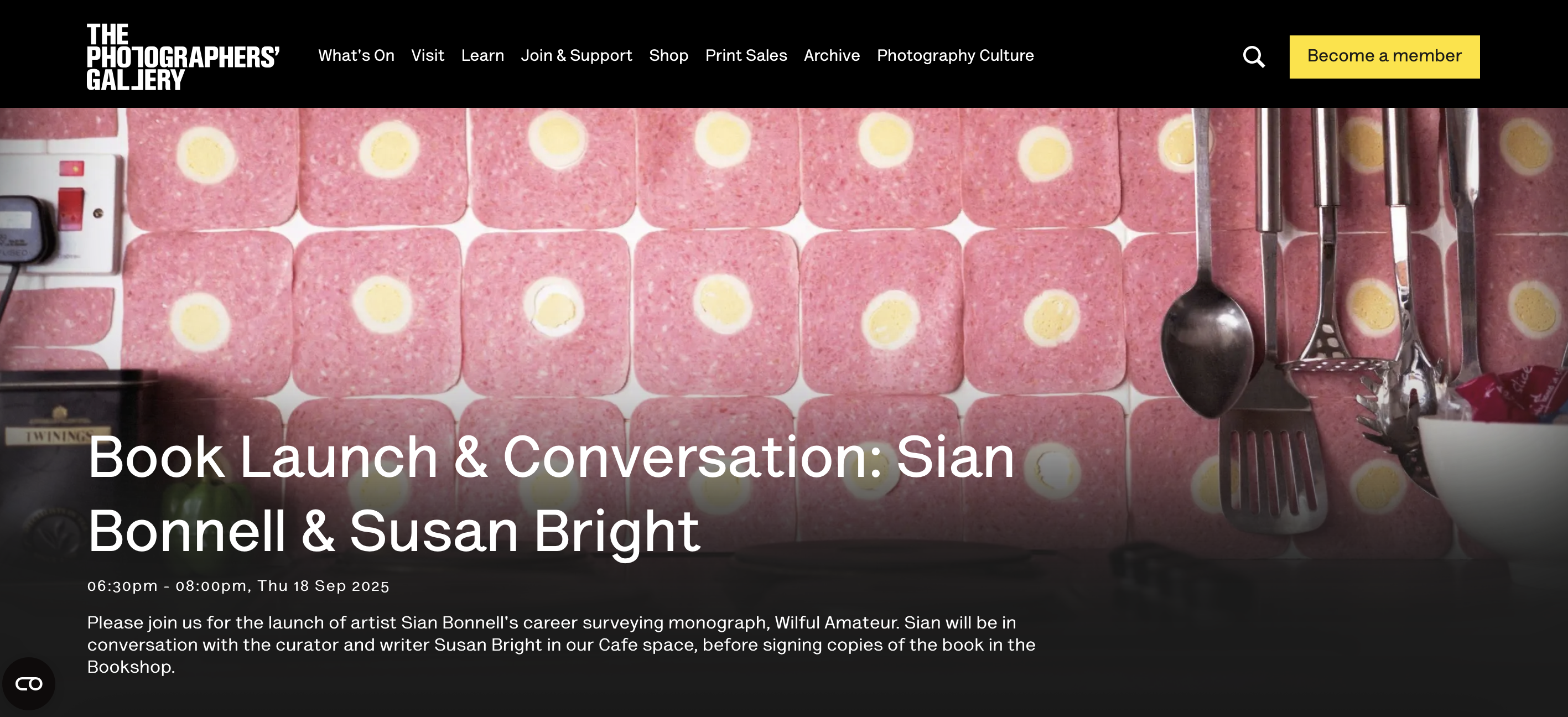
Sian Bonnell and curator Susan Bright collaborated on the launch of Bonnell’s new book Wilful Amateur, at the Photographers’ Gallery in
London. The book presents a timely overview of Sian Bonnell’s art practice from 1978 to the present.

Olivia
Arthur and curator Susan Bright collaborated on the launch of Arthur's
new book, Murmurings of the Skin, at the Photographers' Gallery in
London. Arthur's work explores the relationship between the human body, technology, and connection.
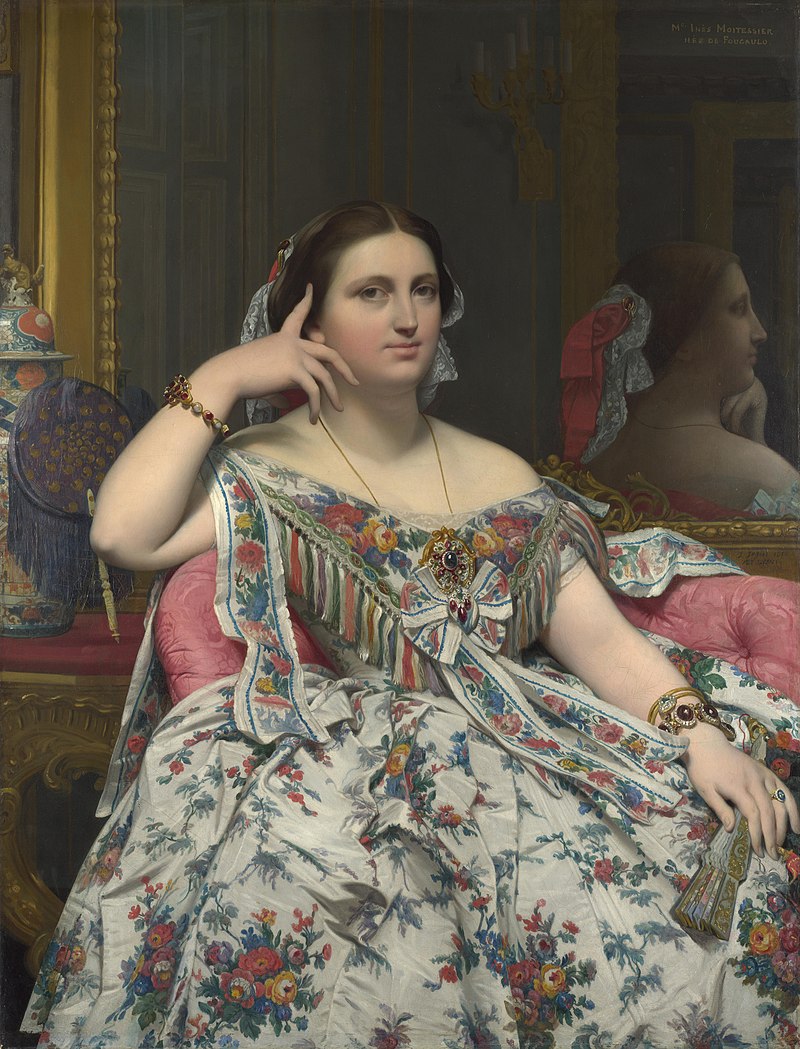
Susan Bright has curated a special series for National Gallery members, inviting various arts professionals to share insights about their favorite paintings. Rather than focusing solely on the artwork itself, the series encourages deeper conversations that extend beyond the physical object. Each painting serves as a catalyst for exploring the personal stories, memories, and emotions it inspires in the speaker.

Join
the artist Phoebe Cummings, together with curators Susannah Baker-Smith
and Susan Bright, for a virtual discussion of Cummings’s short
films Towards a Flower, which are featured in the exhibition “Don’t we touch each other just to prove we are still here?”: Photography and Touch. Cummings explores ceramics
as a time-based medium. The physical connection between artist and material remains visible throughout the work. Clay becomes more than a passive medium—it acts as an active participant, performing its own gradual transformation as it drips, dries, shrinks, and develops cracks over time.

In August 2023 Susan Bright was interviewed for the British Journal of Photography’s Any Answers feature.

Representations of care in photography was an online talk with Australian artists Ying Ang, Odette England and Lisa Sorgini, chaired by Susan Bright. The panel explored themese of family, care, motherhood, place and belonging.

The Anaphora Program is a mentorship program for visual artists who have an incarcerated parent. It provides two artists $15,000 (each) to help produce work while receiving mentorship from five industry leaders over the course of a year. The goal is to assist artists in creating a professional portfolio that can lead to employment, exhibition, publication, or higher education. We believe this program will impact our culture's perspective on incarceration and empower a new wave of artists.
Founded by Carrie Levy with support from Susan Bright, Stephen Frailey, Alexander Ho and Jessica Ingram.
Founded by Carrie Levy with support from Susan Bright, Stephen Frailey, Alexander Ho and Jessica Ingram.

The Norwegian arts platform Objektiv published 'A Criticism Review’, a manifesto where different writers reflect on how we can make changes within the writing community, carving out new ideas about how to work and be published.

For the month of January 2022, Kim Beil, Susan Bright, Mark Alice Durant and Brea Sounders took over the New York Public Library Picture Collection Instagram account.

Susan Bright talks to Brett Rogers OBE about her career from her early curatorial work in Australia, her years as Deputy Director of Visual Arts at the British Council, and her role as Director of The Photographers’ Gallery, London.
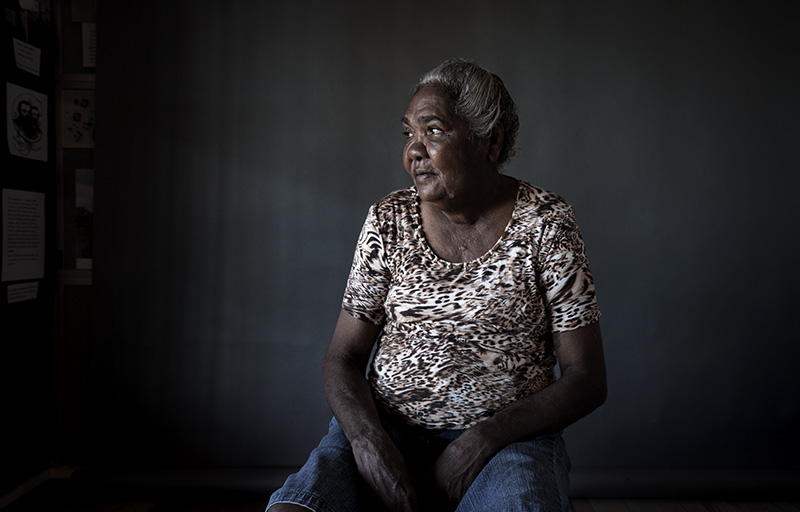
The Taylor Wessing Photographic Portrait Award is prestigious yearly prize held at the National Portrait Gallery in London. Susan Bright was on the panel alongside Mariama Attah (Curator of Open Eye Gallery), Misan Harriman (Photographer and chair of the South Bank Centre) and Magda Keaney (Senior Curator, National Portrait Gallery). Chaired by director of the National Portrait Gallery, Nicholas Cullinan.

The Platform is an experimental forum: 4 days of conversations with personalities from the world of art and photography held at Paris Photo every year. For a day of conversations organized and presented by Nathalie Herschdorfer, Susan Bright contributed to a discussion on women supporting women in November 2021.

My Friend, My Self looks at female friendship in contemporary literature and TV. This essay for Aeon Magazine reveals how complicated and vulnerable people can be and how we must nurture and attend to our friends — and ourselves.
“A few years ago, a curator I know professionally invited me to Arizona to give a lecture. The talk would be in Phoenix and we would stay at her house in Tucson. The invitation made me nervous – not due to the public speaking, or the fact I was travelling to a part of the United States that I had not been to before, but because it would involve several two-hour car journeys with somebody I didn’t know well.” Read more

In this episode of BBC’s Art of Now Susan Bright interviews sculptors, performance artists and filmmakers who use animal parts as their raw material.
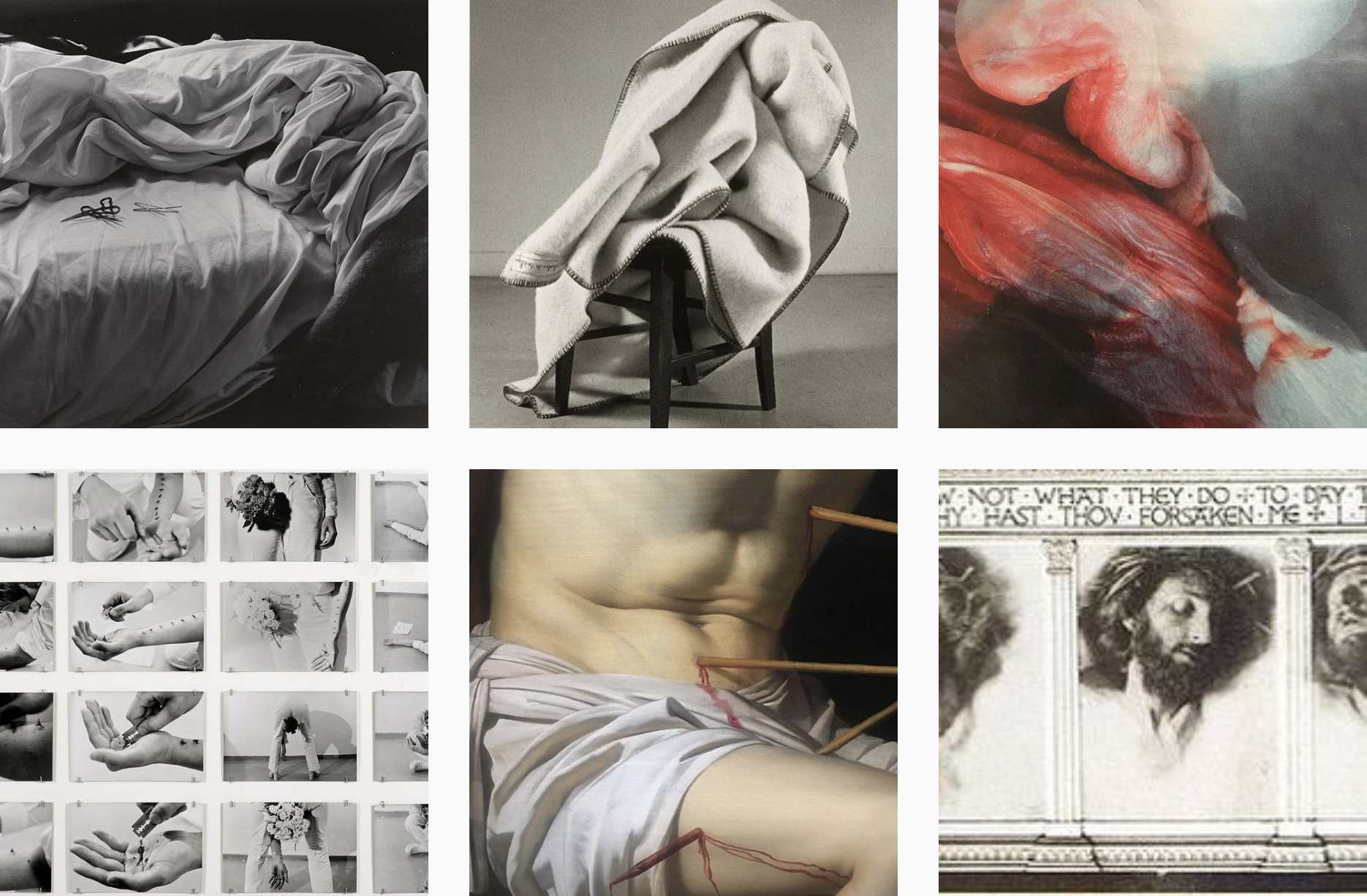
commonplace is an Instagram exchange with the artist Susannah Baker-Smith. It takes its name from commonplace books, which were traditionally a repository for observations, excerpts, and images.


Running, for me, is not something I do — I have become a runner. This subtle shift in language and attitude is a welcome addition to my identity, and one of which I am immensely proud.

Why is it almost a shock to see a photograph of oneself when we see ourselves in the mirror every day? Susan Bright, curator of influential exhibitions such as Home Truths: Photography and Motherhood and guest curator of PHotoESPAÑA 2019, muses on the strangeness of being photographed.

Sabine Mirlesse interview. Excerpt below:
Read the rest here.
SM: What are some of the first elements you consider when you began the making of an exhibition in general? Can you walk us through your thought process a little?
SB: Every exhibition is different. It can start with an idea or a feeling, which I then drill down to something tighter or it can start with an artwork that I think resonates with another and a theme emerges. I must say I work pretty intuitively and often what I am trying to say comes clearer to me as the project evolves – I guess that is a pretty common creative process. I tend to work very closely with artists – this process reflects the idea of ‘conversation as creative practice’, whereby many private thoughts become public through the act of curation. It’s very much a joint effort. But a lot of curating is hard admin and this needs to be made clear as I think many people are not fully aware of this and think its rather glamorous. There are endless checks on prints, sizes, transport, plans, etc. It’s the beginning and end of the process that feel more fluid and creative. I learn something about the work from every installation. It’s always a wonderful surprise to see something I so clearly have in my head manifest into physical space. It’s like magic.
Read the rest here.

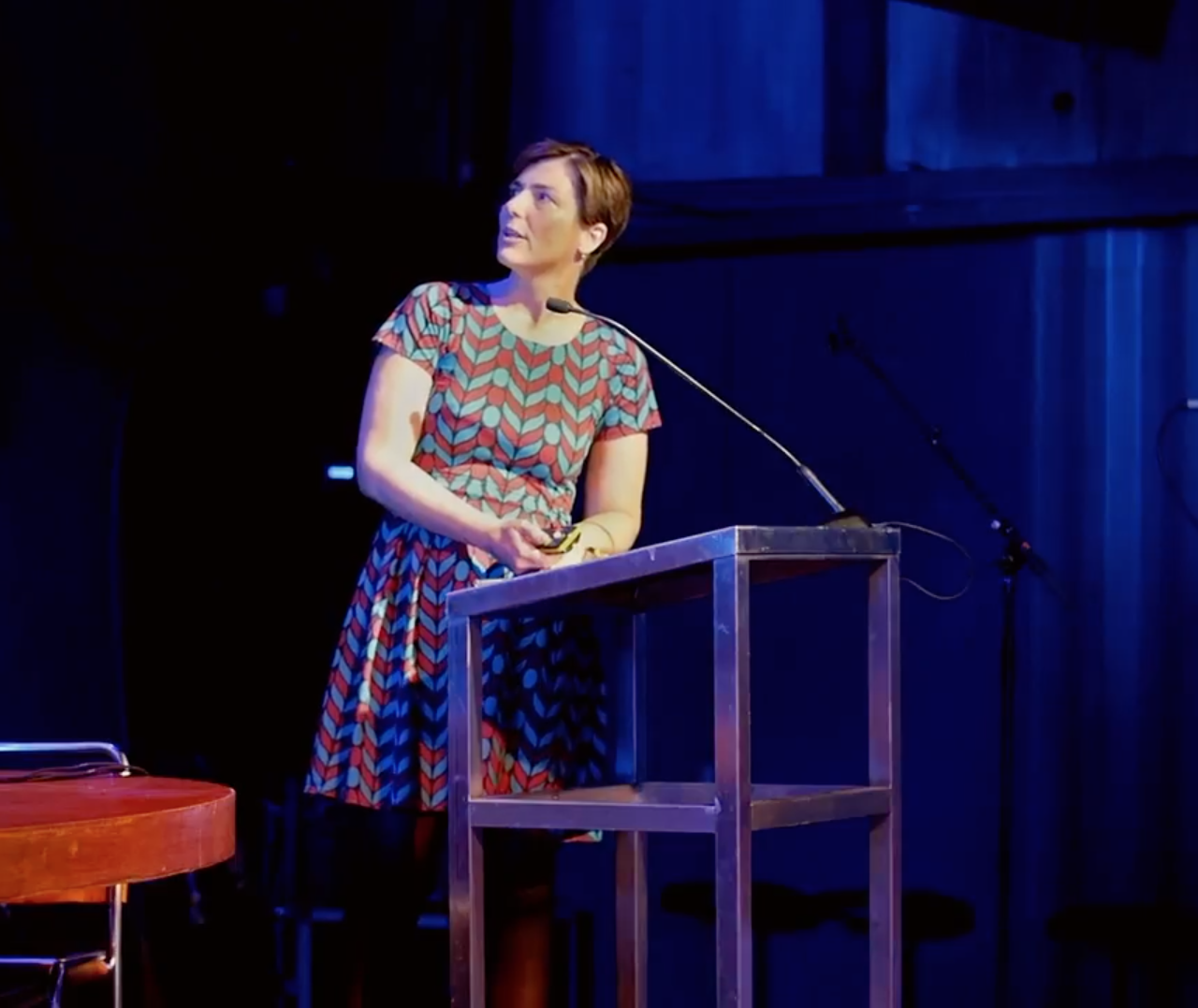
CCP presented Unseen and Undiscovered in 2017. This event featured a series of daily presentations where curators, collectors, and editors each showcased five emerging or overlooked photographers they had discovered over the past year. The second installment featured Susan Bright (curator and writer) and Simindokht Dehghani (Director Ag Galerie). The five emerging or overlooked photographers Susan Bright mentioned were Anne Eder, Caroline McQuarrie, Keirnan Monaghan and Theo Vamvounakis, Jesse Chun, and Anne de Gelas.

2014 interview with Dr. Daniel Palmer (Associate Dean of Research and Innovation in the School of Art at RMIT University, Melbourne). Read full conversation here.
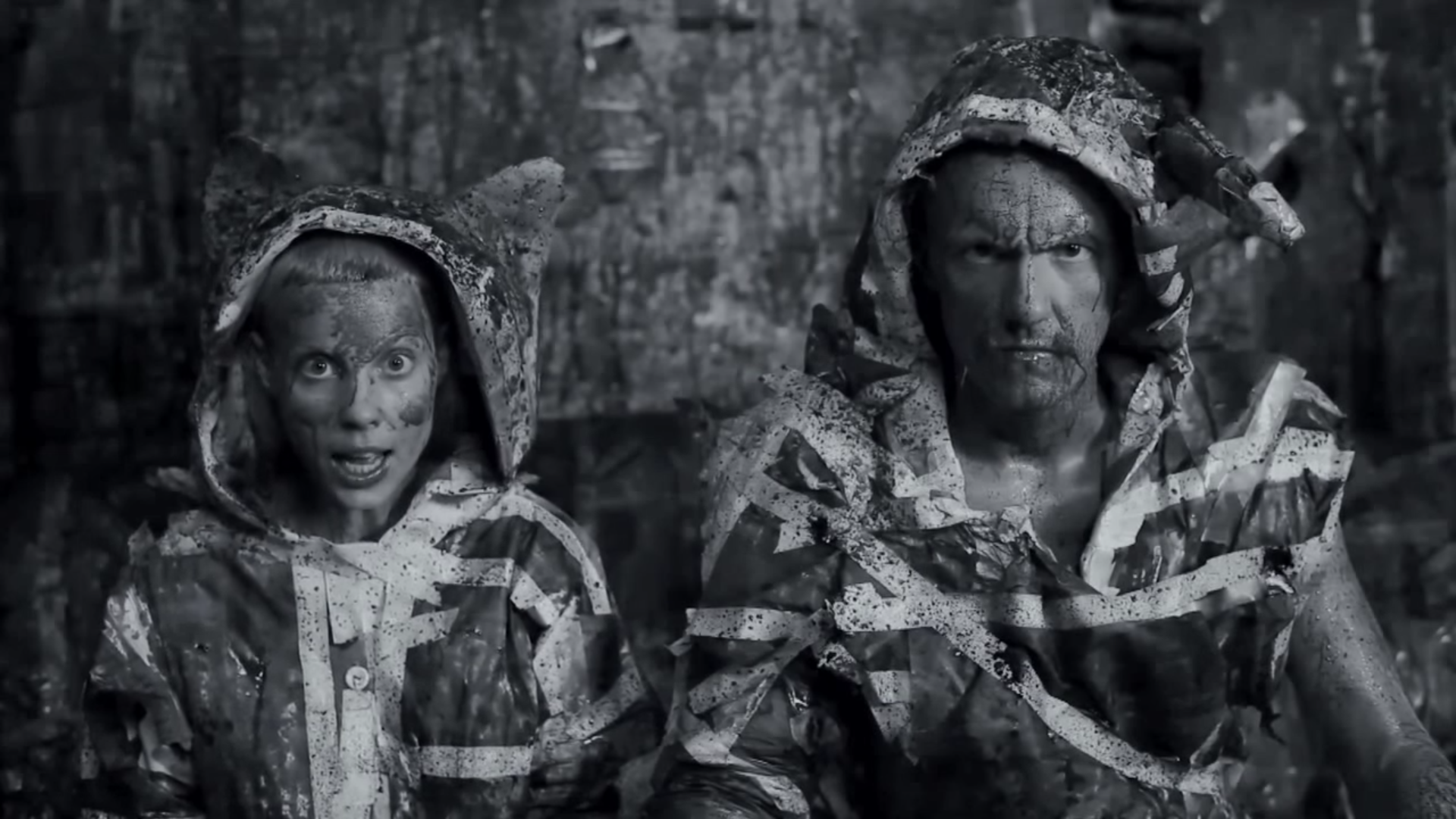
Over the last decade, Susan Bright's editing, curating, and teaching has focused on bringing photography to the center of discussions about fine art. Her fascination with music videos (denigrated films or art in their own right) is only fitting. Curating for MOCAtv, Bright gives us four fine art photographers turned video directors, who execute photographic strategies of portraiture and performance to deftly navigate the laden terrain between mass media and art.

Each year Massey University's College of Creative Arts brings an internationally significant photographic historian, theorist or artist to Wellington to deliver the annual Peter Turner Memorial Lecture.
In 2016 writer and curator Susan Bright delivered the Peter Turner Memorial Lecture. Her practice covers both the making of exhibitions and the writing and editing of books. Throughout these projects a level of intimacy is involved. This manifests itself in both the process of her curatorial work and the projects she is attracted to. In exhibitions, Bright seeks to create a connection with audiences that challenges the relationship with photographs that today takes place primarily on the screen as a part of every day life. Projects explored in this lecture included Home Truths: Photography and Motherhood, Face of Fashion, Auto Focus and forthcoming exhibitions, alongside books that highlight the pivotal role of the curator when dealing with highly personal, intimate subjects in an ever autobiographical culture.
In 2016 writer and curator Susan Bright delivered the Peter Turner Memorial Lecture. Her practice covers both the making of exhibitions and the writing and editing of books. Throughout these projects a level of intimacy is involved. This manifests itself in both the process of her curatorial work and the projects she is attracted to. In exhibitions, Bright seeks to create a connection with audiences that challenges the relationship with photographs that today takes place primarily on the screen as a part of every day life. Projects explored in this lecture included Home Truths: Photography and Motherhood, Face of Fashion, Auto Focus and forthcoming exhibitions, alongside books that highlight the pivotal role of the curator when dealing with highly personal, intimate subjects in an ever autobiographical culture.

Curator Susan Bright talks about Home Truths: Photography, Motherhood and Loss at the Foundling Museum. 11 October 2013 - 5 January 2014.

An interview with Susan Bright, curator of Home Truths: Photography, Motherhood and Identity at The Photographers' Gallery (11 October 2013 - 5 January 2014).

Contextualizing Sarrah Pickering’s work within a trajectory of British photography, Bright talks about the "melancholy" and "deadpan" qualities.
Introducing her series Public Order, a project exploring the Metropolitan Police Public Order Training Center, Pickering describes the works impetus as being in part about the way "Institutions are always trying to plan for the unexpected and trying to control and manage something that can't be controlled."
This conversation between photographer Sarah Pickering and Susan Bright, took place March 31, 2010, on the occasion of the publication of Pickering's first monograph: Explosions, Fires and Public Order. This monograph brings together four of Sarah Pickering's photographic series which collectively present a visually arresting glimpse into the secret world of civil defense.
This conversation between photographer Sarah Pickering and Susan Bright, took place March 31, 2010, on the occasion of the publication of Pickering's first monograph: Explosions, Fires and Public Order. This monograph brings together four of Sarah Pickering's photographic series which collectively present a visually arresting glimpse into the secret world of civil defense.

Pride Photo Award is an annual international photo contest for photos about sexual and gender diversity. Susan Bright was on the jury in 2016 alongside Ayperi Karabuda Ecer, Hideko Kataoka, John Fleetwood and Sunil Gupta. The winning image was by Turkish photographer Akin Celiktas with a photo of the banned 2016 Istanbul Gay Pride.

Have all these years of being involved in photography, on so many levels, changed your way of seeing the world?
SB: I obviously love my profession, but I also think its vital to get a healthy distance from it and retain a part of your life that is utterly separate. I find I can do this very easily and love moments in life that have absolutely nothing to do with photography. This is the usual stuff - friends, family, cooking, reading fiction, dancing, running. These things all bring me joy on a much deeper level.
Read more from this 2016 interview with Klaus Fruchtinis for Urbanautica.





Center Awards Project Development Prize awarded to Megan E. Doherty for her project Back of The Yards.

Susan Bright participated in the i3: Images, Ideas, Inspiration lecture series, presented by MPS Digital Photography at SVA, which features presentations by digital photographers, hardware and software developers and industry experts.
Jury member for or the Festival International de Mode et de Photographie, at Villa Noailles, Hyères 21st-15th April 2016 with Chris Littlewood, Lesley Martin, Clare Strand, Jean Paul Goude, Gareth Pugh, Pierre Louis Denis, Chantal Webber, Jean-Michel Bertin and Heval Okcuoglu.
The Hyères Festival promotes young artists in the fields of fashion and photography. The Villa Noailles organizes competitions, exhibitions and conferences to highlight ten fashion designers and ten photographers, who are selected by a jury consisting of members of each profession.
Artists include Anaïs Boileau; Jojakim Cortis & Adrian Sonderegger; Maja Daniels; Louise Desnos; Jason Larkin; Emilie Regnier; Ilona Szwarc; Fleur van Dodewaard; Vendula Knopova and Sasha Kurmaz.
This year's jury awarded Vendula Knopova with the 15,000 Euro prize.
The Hyères Festival promotes young artists in the fields of fashion and photography. The Villa Noailles organizes competitions, exhibitions and conferences to highlight ten fashion designers and ten photographers, who are selected by a jury consisting of members of each profession.
Artists include Anaïs Boileau; Jojakim Cortis & Adrian Sonderegger; Maja Daniels; Louise Desnos; Jason Larkin; Emilie Regnier; Ilona Szwarc; Fleur van Dodewaard; Vendula Knopova and Sasha Kurmaz.
This year's jury awarded Vendula Knopova with the 15,000 Euro prize.

Lecture at Columbia College Chicago and MoCP to talk about Home Truths (April 2014)
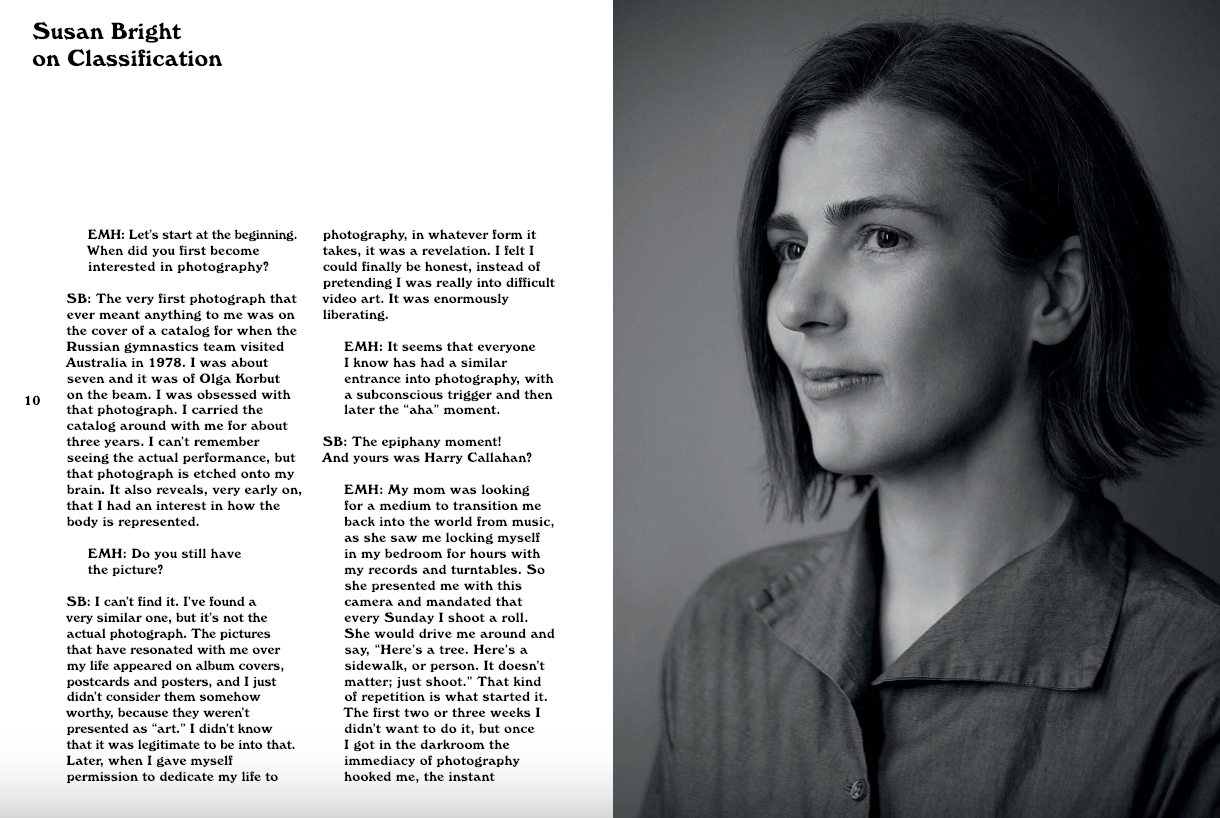
The summer 2014 issue of Creem Magazine is on issuu. Conceived, shot, edited and designed by Erik Madigan Heck, it is a veritable treasure trove of interviews and a wonderful collection of portraits and stories.

In conversation with Elinor Curucci, October 2013 The School of Visual Arts. Watch it on iTunes here.
on left: Elinor Carucci, Mother, 2012
Archival Ink Jet Print, 35x45 inches
on left: Elinor Carucci, Mother, 2012
Archival Ink Jet Print, 35x45 inches

Jury member ICP Infinity Awards
Since 1985, the annual ICP Infinity Awards have recognized major contributions and emerging talent in the fields of photojournalism, art, fashion photography, and publishing. The 2013 recipient selection committee included Susan Bright, Curator/Writer, New York, NY; Douglas Nickel, Andrea V. Rosenthal Professor of Modern Art, History of Art and Architecture, Brown University; and Ramon Reverte, Editor in Chief and Creative Director, Editorial RM, Mexico/Barcelona.
Since 1985, the annual ICP Infinity Awards have recognized major contributions and emerging talent in the fields of photojournalism, art, fashion photography, and publishing. The 2013 recipient selection committee included Susan Bright, Curator/Writer, New York, NY; Douglas Nickel, Andrea V. Rosenthal Professor of Modern Art, History of Art and Architecture, Brown University; and Ramon Reverte, Editor in Chief and Creative Director, Editorial RM, Mexico/Barcelona.



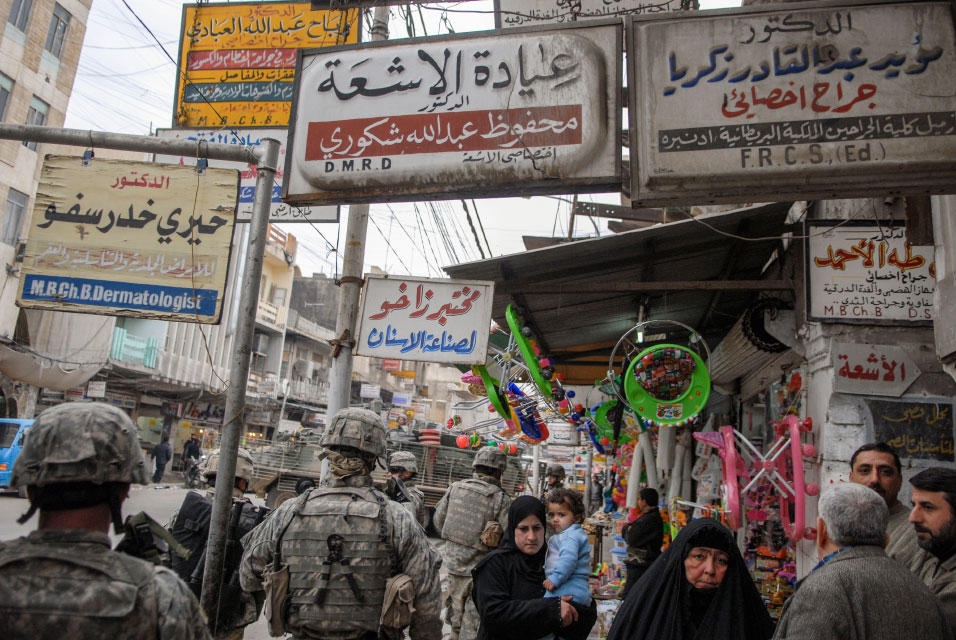

Jury member W. Eugene Smith Grant in Humanistic Photography
The W. Eugene Smith Grant in Humanistic Photography is presented annually to a photographer whose past work and proposed project, as judged by a panel of experts, follows the tradition of W. Eugene Smith’s concerned photography and dedicated compassion evidenced during his 45-year career as a photographic essayist. Juror member alongside Kira Pollock (TIME Director of Visual Enterprise) in 2012.
The W. Eugene Smith Grant in Humanistic Photography is presented annually to a photographer whose past work and proposed project, as judged by a panel of experts, follows the tradition of W. Eugene Smith’s concerned photography and dedicated compassion evidenced during his 45-year career as a photographic essayist. Juror member alongside Kira Pollock (TIME Director of Visual Enterprise) in 2012.

Jury member The Aaron Siskind Individual Photographer's Fellowship
The Aaron Siskind Foundation offers a limited number of Individual Photographer's Fellowship grants of up to $10,000 each, for artists working in photography and photo-based art. Recipients will be determined by a panel of distinguished guest judges on the basis of artistic excellence, accomplishment to date, and the promise of future achievement in the medium in its widest sense. The Foundation seeks to support artists/photographers who demonstrate a serious commitment to the field, who are professionally active or employed in the field. Juror in 2011 alongside Alexa Dilworth and Jamie Wellford.
The Aaron Siskind Foundation offers a limited number of Individual Photographer's Fellowship grants of up to $10,000 each, for artists working in photography and photo-based art. Recipients will be determined by a panel of distinguished guest judges on the basis of artistic excellence, accomplishment to date, and the promise of future achievement in the medium in its widest sense. The Foundation seeks to support artists/photographers who demonstrate a serious commitment to the field, who are professionally active or employed in the field. Juror in 2011 alongside Alexa Dilworth and Jamie Wellford.


Jury member The Google Photography Prize
To coincide with the Out of Focus exhibition held at the Saatchi Gallery in London in 2012 the gallery partnered Google for a student prize. The large international panel awarded Swedish photojournalism student Viktor Johansson the prize.
To coincide with the Out of Focus exhibition held at the Saatchi Gallery in London in 2012 the gallery partnered Google for a student prize. The large international panel awarded Swedish photojournalism student Viktor Johansson the prize.

Jury member, Flash Forward - Emerging Photographers.
| Established in 2004 in Toronto, The Magenta Foundation is a trailblazing charitable arts publishing house that consistently showcases the work of talented artists on a global scale, drawing attention to underrepresented photographers in powerful exhibitions and a roster of impressive international publications. The emerging photographers competition supports all young photographers working in all forms of photography. |

Host of an evening with Adam Broomberg & Oliver Chanarin in October 2009 at The School of Visual Arts theater. Watch it on iTunes.
on left: Adam Broomberg & Oliver Chanarin
Fig. 3 (c-type print, 5x4", 2007)
on left: Adam Broomberg & Oliver Chanarin
Fig. 3 (c-type print, 5x4", 2007)

In November 2010 Aperture Foundation at The New School hosted Confounding Expectations: Revisiting "In, Around and Afterthoughts on Documentary Photography".
Participating artists included: Chris Verene, Michael Wolf and LaToya Ruby Frazier.
Participating artists included: Chris Verene, Michael Wolf and LaToya Ruby Frazier.
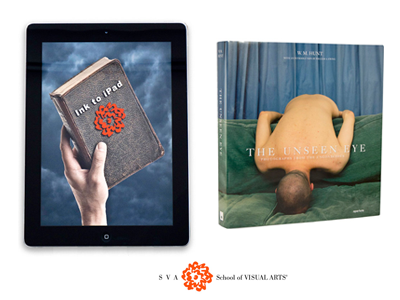

Invited speaker at Toronto's Flash Forward Festival.
Early research interview on representation of mothers (June 2012)
on left: Hanna Putz, Untitled (A.M. 1), 2011
Color Photograph, 80×100 cm
Edition: 6 + 3 A.P.
on left: Hanna Putz, Untitled (A.M. 1), 2011
Color Photograph, 80×100 cm
Edition: 6 + 3 A.P.

So why is it that there is still a complicated, rivalrous relationship between the worlds of art and photography? Why is photography still referred to in a semi-derogatory way? What is it about photography that makes it, for some people, inherently of less worth when held up against other art mediums? In April 2012 Susan Bright was invited by the Saatchi Gallery (London) to participate in a discussion with Mitch Epstein, Geoff Dyer and Hannah Starkey to explore the status, display and appreciation of photography in the art world.
